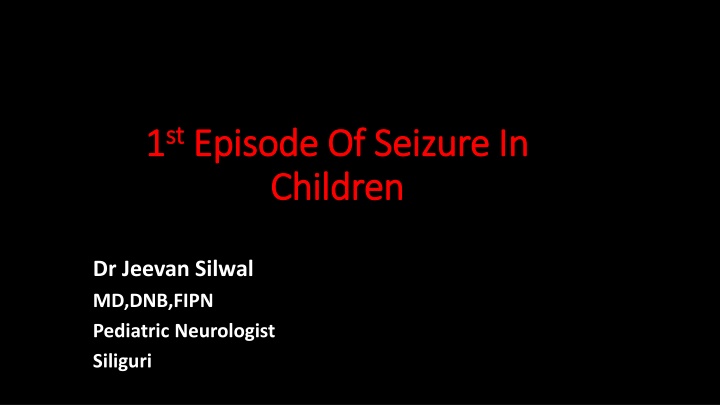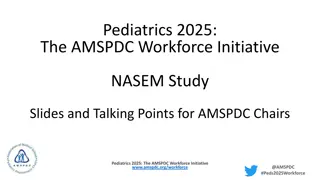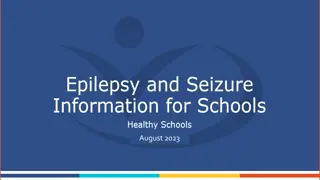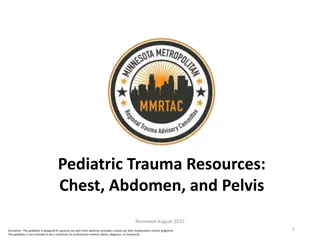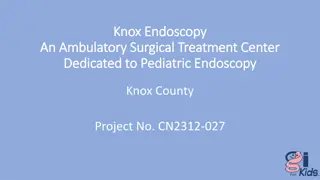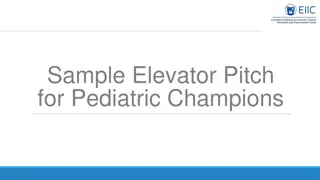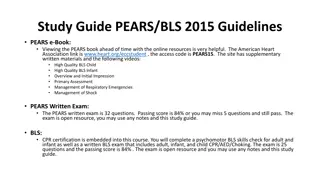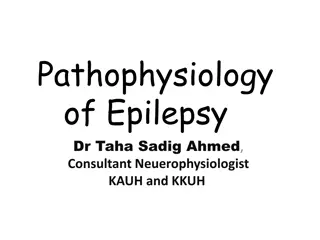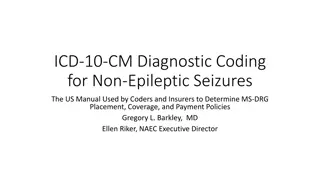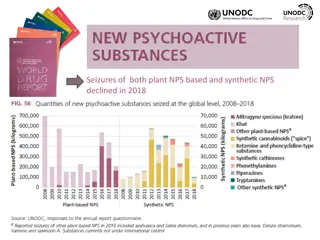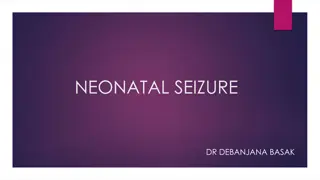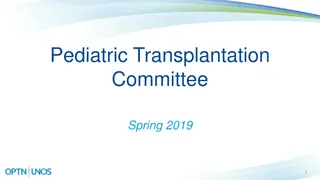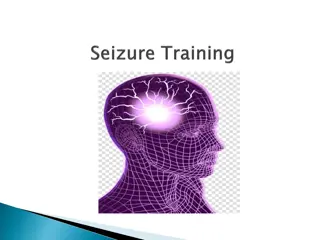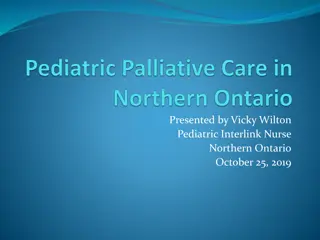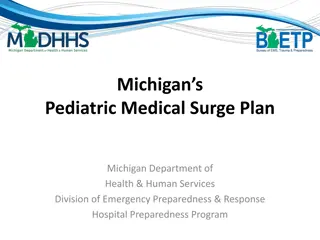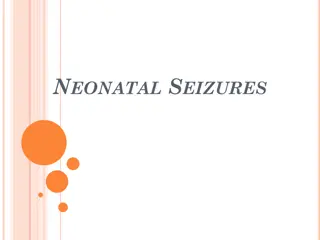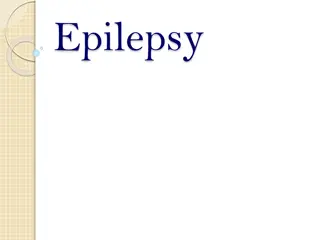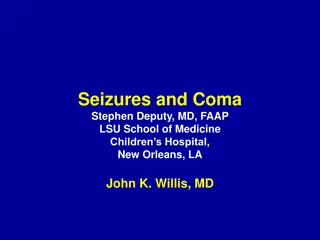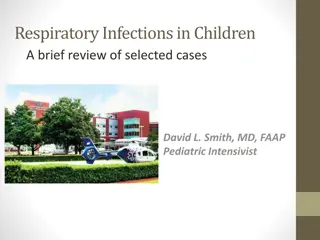Seizures in Children - Dr. Jeevan Silwal, Pediatric Neurologist
A detailed exploration of seizures in children, including definition, clinical manifestations, case studies, and differential diagnosis. Covering important aspects such as historical events, presentation, and mimicking disorders. Helpful for healthcare professionals and parents seeking information on pediatric seizures.
Download Presentation

Please find below an Image/Link to download the presentation.
The content on the website is provided AS IS for your information and personal use only. It may not be sold, licensed, or shared on other websites without obtaining consent from the author.If you encounter any issues during the download, it is possible that the publisher has removed the file from their server.
You are allowed to download the files provided on this website for personal or commercial use, subject to the condition that they are used lawfully. All files are the property of their respective owners.
The content on the website is provided AS IS for your information and personal use only. It may not be sold, licensed, or shared on other websites without obtaining consent from the author.
E N D
Presentation Transcript
1 1st stEpisode Of Seizure In Episode Of Seizure In Children Children Dr Jeevan Silwal MD,DNB,FIPN Pediatric Neurologist Siliguri
SEIZURES: A seizure is defined as: Transient occurrence of signs and/or symptoms due to abnormal excessive or synchronous neuronal activity in the brain. Clinically manifested by motor, sensory, autonomic or behavioral disturbances.
Case: Case: 9 year old , male child with normal birth and development history. Came with one episode of GTCS,lasting for 2-3 min at 8am,post ictal drowsiness for 15 min. O/E Unremarkable EEG & MRI brain ?? AED ??
Detailed History Detailed History EVENT H/O: Preceding events (awake, sleep, playing, exercise, and following cry) Presence of aura (somatosensory, auditory, visual, and abdominal)(child >5 years) Ictal manifestations (motor, sensory, autonomic, cognitive, and behavioral) Postictal period (dizziness, loss of consciousness, immediate return to normal) OTHER H/O: Age at onset and presentation (neonate, infancy, childhood) Provocation factors (head trauma, fever, and preceding diarrheal illness) Frequency of seizure (Is it first episode?) Birth history and developmental history Family history of epilepsy and febrile convulsions
Paroxysmal disorders mimicking seizure Paroxysmal disorders mimicking seizure Benign Neonatal Sleep Myoclonus Benign Myoclonus of Early Infancy Jitteriness Shuddering Paroxysmal Tonic Upgaze of Infancy Spasmus Nutans Head Nodding Benign Paroxysmal Torticollis Benign Idiopathic Dystonia of Infancy Sandifer Syndrome Self Gratification Paroxysmal Dyskinesias Tics Stereotypes Paroxysmal disorders in sleep PNES
Non Non- -epileptic events( epileptic events(Agewise Agewise) )
ILAE ILAE- -Acute symptomatic Seizure Acute symptomatic Seizure Events, occurring in close temporal relationship with an acute CNS insult-- metabolic, toxic, structural, infectious, or inflammation. Interval between the insult and seizure may vary due to the underlying clinical condition. Acute symptomatic seizures have also been called: Reactive seizures Provoked seizures Situation-related seizures Beghi et al. Epilepsia 2010;51:671-675
Defining time in acute symptomatic seizure Events within 1 week of: Stroke TBI Anoxic encephalopathy Intracranial surgery First identification of subdural hematoma Presence of an active CNS infection During an active phase of multiple sclerosis or other autoimmune disease Beghi et al. Epilepsia 2010;51:671-675
Seizure versus Epilepsy A seizure is the event Epilepsy is the disease associated with spontaneously recurring seizures
ILAE OFFICIAL REPORT Epilepsy is a disease of the brain defined by any of the following conditions 1. A least two unprovoked (or reflex) seizures occurring >24 h apart 2. One unprovoked (or reflex) seizure and a probability of further seizures similar to the general recurrence risk (at least 60%) after two unprovoked seizures, occurring over the next 10 years 3. Diagnosis of an epilepsy syndrome
These are not Epilepsy Febrile Seizure(6m-6yrs) Metabolic seizures(Na,Ca,Mg,Glucose,O2) Toxic seizures(drug Rxn or withdrawl,Renal failure) Acute concussive convulsion Convulsive syncope Seizures within 1st week after brain trauma, infection, stroke
Pointers Pointers- -History and Examination History and Examination Febrile state, trauma, intercurrent infection, if present, preclude the diagnosis of an unprovoked seizure If brought with GTCS, ask about other seizure types(absence, myoclonic, or focal impaired awareness) Hypopigmented spots, focal neurologic deficit, evidence of mental retardation or cerebral palsy, suggest a symptomatic cause
Epilepsy Syndrome Epilepsy Syndrome Cluster of electroclinical characteristics, including age at onset, seizure type(s), EEG & MRI characteristics Other factors:neurocognitive delay, neurologic examination abnormalities Clear implications for etiology, treatment, and prognosis Drug precision as per syndromes(WS,LGS,Dravet) Syndrome evolve over time to other syndrome
Etiology Etiology Genetic: Epilepsy syndromes of the generalized genetic epilepsies (IGE- CAE,JAE,JME), Monogenic epilepsy Structural: congenital (eg, cortical dysplasia, tuberous sclerosis) or acquired (eg, stroke, trauma) Metabolic: Glucose transporter deficiency, creatine deficiency syndromes, and mitochondrial cytopathies. Infection: NCC, TB Immune:Rasmussen encephalitis, NMDA-R encephalitis Unknown: BECTS,Panayiotopoulos syndrome
Non Non- -epileptic childhood seizures epileptic childhood seizures- -Causes Causes
Clinical Approach Clinical Approach
Recommendations Recommendations EEG be obtained in all children in whom a non febrile seizure To predict the risk of recurrence To classify the seizure type and epilepsy syndrome. Other studies, including LP, laboratory tests, and neuroimaging For the cause of the seizure Detecting potentially treatable abnormalities Children of different ages may require different management strategies
Investigations Investigations Blood glucose, electrolytes, calcium LP: <6mth with fever, 6-12mths optional, >12mths clinical signs Meningeal signs+ Rule out features of Increased ICT Suspected toxic or drug-induced etiology, blood levels of suspected drug
Electroencephalogram(EEG) Electroencephalogram(EEG) Recommended for all afrebrile seizure Epileptiform-support clinical diagnosis, epilepsy syndromes, predict Sz recurrence Recorded 3-4 days after the last seizure to avoid post-ictal slowing Sleep deprived EEG should be part of all routine recordings in children >3yrs Omission of AED prior to EEG is not recommended Awake and Sleep, at least 30min Activation procedure: Photic and hyperventilation A normal EEG does not rule out epilepsy Should be read by trained neurologist
Neuroimaging Neuroimaging Focal seizures, cluster of seizures, focal neurological deficit MRI is more sensitive than CT and is the modality of choice CT brain-in acute situations like head trauma, status epilepticus, and epilepsy, where granulomas are a possibility Neuroimaging is not recommended in benign epilepsies
Whether or not to treat with AED following a first unprovoked seizure? Risk benefit: Risk of another seizure Vs risk of chronic AED therapy. Decision must be individualized and take into account both medical issues and patient and family preference. Treatment with AED is not indicated for the prevention of the development of epilepsy Parental counseling-allay parental fears, negative reactions, and apprehensions of stigma or social taboo Home management of seizure: recovery position,intranasal midazolam (0.2 mg/kg; maximum: 10 mg) in case of prolonged seizure (>3-5 min)
IV BZD-midazolam(0.1-0.2)mg/kg, lorazepam(0.1mg/kg) AED: Phenytoin, levetiracetam Avoid valproate for suspected metabolic disorder Acute symptomatic seizure-withdrawn after 7 days (head trauma) or 3 months (meningoencephalitis with brain parenchymal lesion) Long-term AEDs-parenchymal structural lesions such as tuberculoma,NCC, or infarct IGE: At least 2yrs seizure free
Conclusion Conclusion Identify Seizure mimics Good event history EEG and Neuroimaging(MRI), for 1st afebrile Sz Not all cases need MRI If fits to epilepsy, see if fits to epilepsy syndrome Parental counselling and home management(midazolam spray)
THANK YOU THANK YOU
